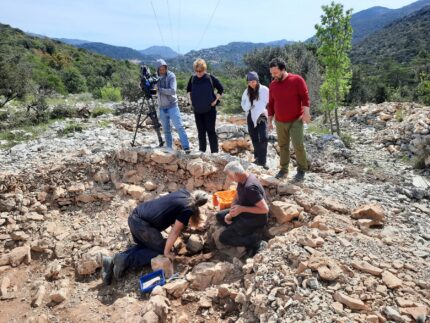
This is the second Greco-Illyrian helmet found in the Gomile excavations. The previous example was found in a grave along with fragments of iron weapons and thus likely belonged to a member of the warrior elite who was buried there. The recently-discovered helmet was found in a dry stone-walled addition to a grave, so archaeologists believe it may have been a votive deposit.

What is very interesting is that two different types appear here in the same place, which actually speaks of a continuity of power of the respective community. These helmets have always been a symbol of some kind of status and power, said Dr. sc. Hrvoje Potrebica , from the Department of Archeology of the Faculty of Philosophy in Zagreb.
The highly valuable and rare helmets keep company with other exceptional grave goods, including 15 bronze and silver fibulae, 12 needles, spiral bronze jewelry, bronze tweezers, hundreds of glass and amber beads, a bronze diadem and more than three dozen vessels of Greek origin, most of them made in Attic and Italic workshops. These were the most highly prized pieces of pottery of the time. If acquired via trade, the cost would have been prohibitive. It’s also possible they were acquired by piracy, a pursuit the Illyrian warriors on the Adriatic coast were famous for.
* This article was originally published here








No comments:
Post a Comment